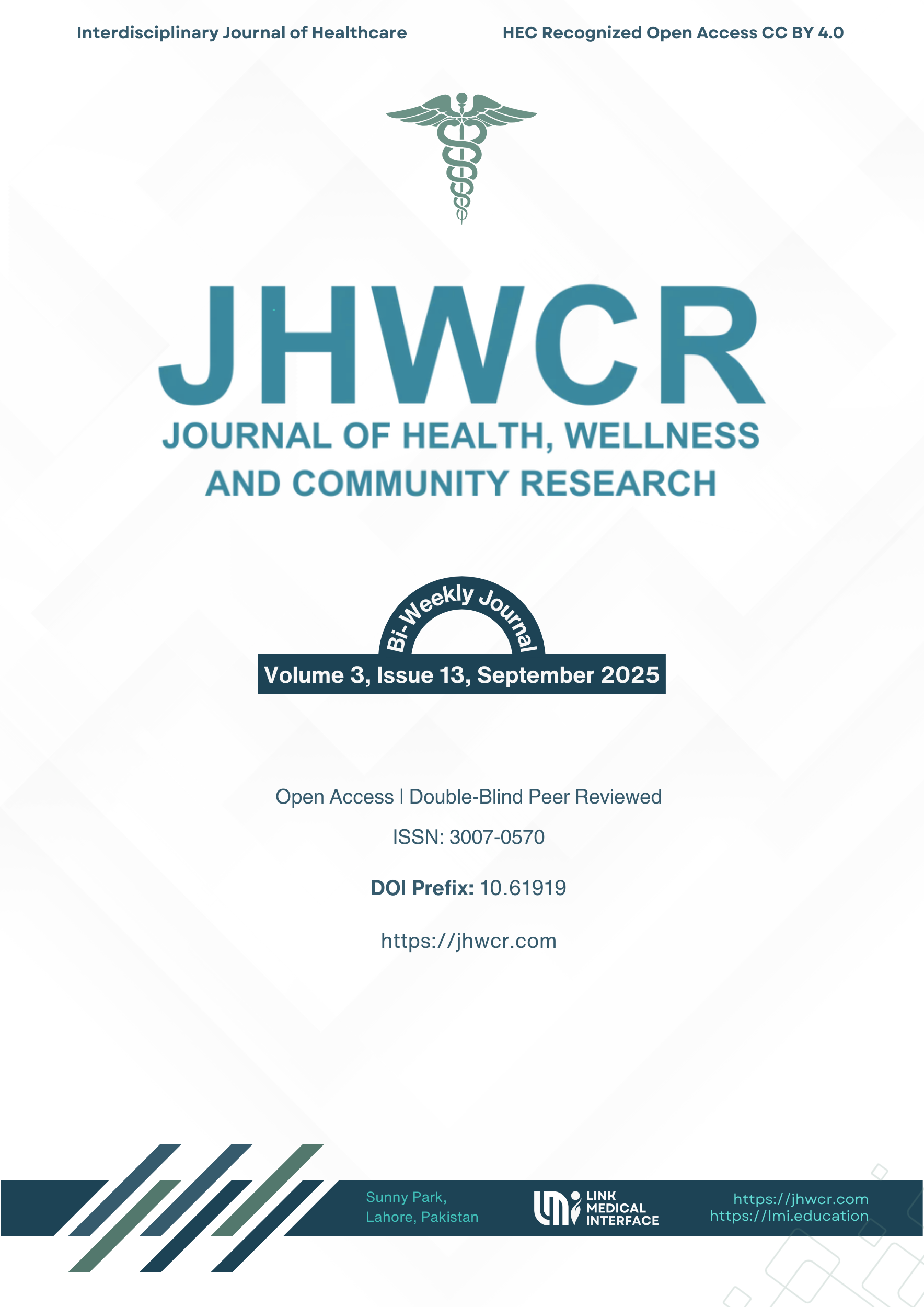Functional Characterization of Non-Synonymous SNPs in the Hypertension-Associated AGT Gene Using Bioinformatic Tools
DOI:
https://doi.org/10.61919/4jj1yk96Keywords:
AGT, angiotensinogen, hypertension, nsSNP, RAAS, bioinformatics, protein stability, MutPred, I-TASSERAbstract
Background: Hypertension, the “silent killer,” is a multifactorial disorder driven by genetic and environmental factors. Approximately 90% of cases are essential hypertension. Despite effective pharmacotherapy, there is no permanent cure; lifestyle modification remains foundational. Within the renin–angiotensin–aldosterone system (RAAS), the angiotensinogen (AGT) gene has been widely investigated and linked to essential hypertension across populations. Objective: To identify potentially pathogenic non-synonymous variants (nsSNPs) in AGT and evaluate their effects on protein structure, stability, and function using comprehensive in-silico analyses. Methods: Functional impact was predicted with SIFT, PolyPhen-2, PhD-SNP, SNP&GO, and PANTHER. Protein stability was assessed with I-Mutant 3.0 and MUpro. Evolutionary conservation was analyzed using ConSurf; functional consequences were explored with MutPred2. Post-translational modifications (PTMs) were screened. Three-dimensional structures were modeled with I-TASSER; wild-type vs mutant conformations were examined in Chimera 1.11 and compared using TM-align. Gene–gene and protein–protein interaction networks were explored using GeneMANIA and STRING, respectively. Results: Among 475 missense variants retrieved, 21 nsSNPs were consistently predicted as deleterious by all five functional tools. Most of these variants decreased predicted protein stability (I-Mutant: 18/21; MUpro: 20/21). Several mapped to highly conserved and functionally exposed positions. Structural modeling indicated measurable deviations between wild-type and mutant models (TM-scores ~0.97–0.99; RMSD ~0.87–1.76 Å). Network analyses highlighted the centrality of AGT within RAAS-related interactions. Conclusion: The study prioritizes 21 AGT nsSNPs with strong in-silico evidence for structural/functional impact. These candidates merit targeted association studies and experimental validation to clarify their roles in hypertension pathophysiology and to inform precision therapeutics.
References
1. Baig F, Baig A, Khan N. ASSOCIATION STUDY OF AGT GENE POLYMORPHISM “RS699” WITH HYPERTENSION IN A PAKISTANI POPULATION. Journal of Medical & Health Sciences Review. 2025;2(3).
2. Tanira M, Al Balushi K. Genetic variations related to hypertension: a review. Journal of human hypertension. 2005;19(1):7-19.
3. Kearney PM, Whelton M, Reynolds K, Muntner P, Whelton PK, He J. Global burden of hypertension: analysis of worldwide data. The lancet. 2005;365(9455):217-23.
4. Virani SS, Alonso A, Aparicio HJ, Benjamin EJ, Bittencourt MS, Callaway CW, et al. Heart disease and stroke statistics—2021 update: a report from the American Heart Association. Circulation. 2021;143(8):e254-e743.
5. Abrass IB. The biology and physiology of aging. Western Journal of Medicine. 1990;153(6):641.
6. Chobanian AV, Bakris GL, Black HR, Cushman WC, Green LA, Izzo Jr JL, et al. The seventh report of the joint national committee on prevention, detection, evaluation, and treatment of high blood pressure: the JNC 7 report. Jama. 2003;289(19):2560-71.
7. Singh M, Singh A, Pandey P, Chandra S, Singh K, Gambhir I. Molecular genetics of essential hypertension. Clinical and experimental hypertension. 2016;38(3):268-77.
8. Elkina AY, Akimova N, Shvarts YG. Polymorphism of ACE, AGT, AGTR1 genes as genetic predictors of hypertension. Russian Journal of Cardiology. 2021;26(1S):4143.
9. Pontremoli R, Sofia A, Tirotta A, Ravera M, Nicolella C, Viazzi F, et al. The deletion polymorphism of the angiotensin I-converting enzyme gene is associated with target organ damage in essential hypertension. Journal of the American Society of Nephrology. 1996;7(12):2550-8.
10. Lu H, Cassis LA, Vander Kooi CW, Daugherty A. Structure and functions of angiotensinogen. Hypertension Research. 2016;39(7):492-500.
11. Padmanabhan S, Dominiczak AF. Genomics of hypertension: the road to precision medicine. Nature Reviews Cardiology. 2021;18(4):235-50.
12. Repchuk Y, Sydorchuk L, Sydorchuk A, Fedonyuk L, Kamyshnyi O, Korovenkova O, et al. Linkage of blood pressure, obesity and diabetes mellitus with angiotensinogen gene (AGT 704T> C/rs699) polymorphism in hypertensive patients. Bratislava Medical Journal/Bratislavské Lekárske Listy. 2021;122(10).
13. Li B, Krishnan VG, Mort ME, Xin F, Kamati KK, Cooper DN, et al. Automated inference of molecular mechanisms of disease from amino acid substitutions. Bioinformatics. 2009;25(21):2744-50.
14. Zhao Z, Gong C, Gao Y, Liu X, Wu S, Zhao H, et al. Association between single nucleotide polymorphisms in cardiovascular developmental critical genes and hypertension: a propensity score matching analysis. International Journal of Hypertension. 2020;2020(1):9185697.
15. Sim N-L, Kumar P, Hu J, Henikoff S, Schneider G, Ng PC. SIFT web server: predicting effects of amino acid substitutions on proteins. Nucleic acids research. 2012;40(W1):W452-W7.
16. Adzhubei I, Jordan DM, Sunyaev SR. Predicting functional effect of human missense mutations using PolyPhen‐2. Current protocols in human genetics. 2013;76(1):7.20. 1-7.. 41.
17. Capriotti E, Calabrese R, Casadio R. Predicting the insurgence of human genetic diseases associated to single point protein mutations with support vector machines and evolutionary information. Bioinformatics. 2006;22(22):2729-34.
18. Calabrese R, Capriotti E, Fariselli P, Martelli PL, Casadio R. Functional annotations improve the predictive score of human disease‐related mutations in proteins. Human mutation. 2009;30(8):1237-44.
19. Thomas PD, Kejariwal A, Campbell MJ, Mi H, Diemer K, Guo N, et al. PANTHER: a browsable database of gene products organized by biological function, using curated protein family and subfamily classification. Nucleic acids research. 2003;31(1):334-41.
20. Ashkenazy H, Abadi S, Martz E, Chay O, Mayrose I, Pupko T, et al. ConSurf 2016: an improved methodology to estimate and visualize evolutionary conservation in macromolecules. Nucleic acids research. 2016;44(W1):W344-W50.
21. Zhang Y. I-TASSER server for protein 3D structure prediction. BMC bioinformatics. 2008;9(1):40.
22. Pettersen EF, Goddard TD, Huang CC, Couch GS, Greenblatt DM, Meng EC, et al. UCSF Chimera—a visualization system for exploratory research and analysis. Journal of computational chemistry. 2004;25(13):1605-12.
23. Warde-Farley D, Donaldson SL, Comes O, Zuberi K, Badrawi R, Chao P, et al. The GeneMANIA prediction server: biological network integration for gene prioritization and predicting gene function. Nucleic acids research. 2010;38(suppl_2):W214-W20.
24. Jensen LJ, Kuhn M, Stark M, Chaffron S, Creevey C, Muller J, et al. STRING 8—a global view on proteins and their functional interactions in 630 organisms. Nucleic acids research. 2009;37(suppl_1):D412-D6.
25. Deng W, Wang Y, Ma L, Zhang Y, Ullah S, Xue Y. Computational prediction of methylation types of covalently modified lysine and arginine residues in proteins. Briefings in Bioinformatics. 2017;18(4):647-58.
Downloads
Published
Issue
Section
License
Copyright (c) 2025 Huma Israr, Aina Sibghat, Fajar Baig, Wagma Gul, Fazal Jalil, Naveed Khan (Author)

This work is licensed under a Creative Commons Attribution 4.0 International License.


